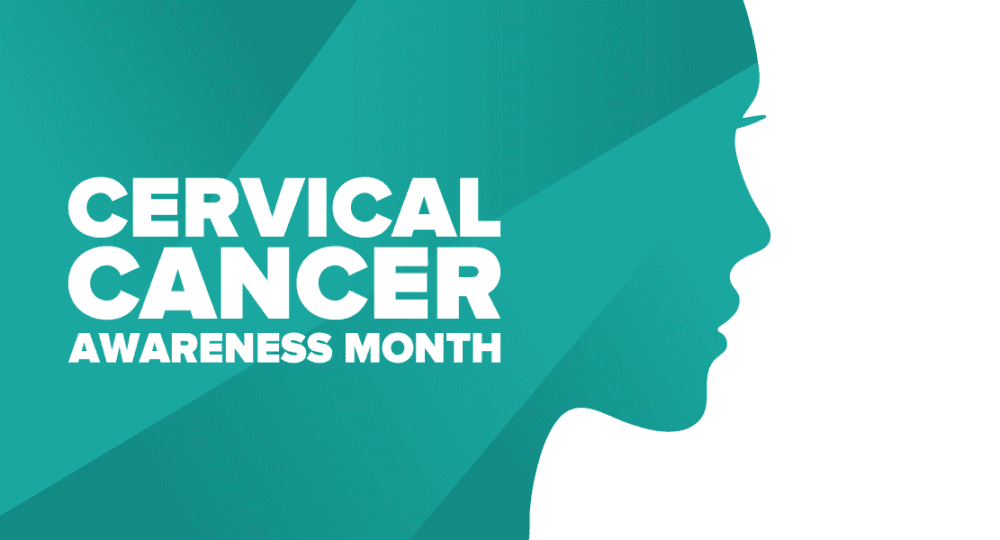My husband recently had an MRI to assess neck pain and was puzzled by the results, which noted cervical stenosis. “Is this a mistake?” he asked me; “I don’t have a cervix?”
For those of us who do, January is Cervical Health Awareness Month, and a propitious time to reflect on the history of research into cervical cancer, and the current state of screening and prevention recommendations.
A Brief History:
Cervical cancer was once one of the most common causes of cancer death for American women. For several hundred years, researchers/clinicians suspected a link between cervical cancer and sex, noting that there was a low incidence among nuns, but that it was common among sex workers, and among women with partners who frequently hired sex workers. So, there was some suspicion that there was an aspect of transmissibility in the disease process.
While the mechanism of transmission was still being investigated, a major breakthrough was achieved in screening (the PAP smear, introduced in 1943). The PAP test led to a decrease in the rates of cervical cancer by HALF in the first decade of screening.
Even as the cervical cancer rates were dropping, Henrietta Lacks, a 31-year-old mother of 5 sought care at Johns Hopkins for an advanced cervical cancer. Despite their best efforts, the disease took her life (1951). Her tumor cells, however, were found to have a unique quality: they survived and multiplied in the lab (all other specimens to date, had quickly died in the lab). Scientists found they were now able to study how living tumor cells reacted to radiation, chemicals, other viruses, etc., and research was moved forward not only with regard to cervical cancer but also with respect to many other illnesses, including polio.
Another major advance came when HPV (the human papillomavirus) was linked to cervical cancer and genital warts in 1976. Thirty years later, Gardasil, the first HPV vaccine was introduced, and with it, the hope that most cases can actually be PREVENTED.
Some Basics:
- The main types of cervical cancers are squamous cell carcinoma (90%) and adenocarcinoma.
- The HPV infection is believed to be the first step in developing cervical cancer but does not necessarily result in the development of the disease. It increases the risk of developing cervical cancer, but, in most people, the immune system can clear the virus.
- Other risk factors include smoking, immunodeficiency, chlamydia infection, a diet low in fruits and vegetables, being overweight, long term use of birth control pills, having more than 3 full-term pregnancies, being younger than 17 at your first full-term pregnancy, inadequate access to health care services, exposure to Diethylstilbestrol (DES) (a drug some women were prescribed until 1971 to prevent miscarriage), and having a family history of cervical cancer.
- It is possible that the use of an IUD might LOWER the risk of developing cervical cancer.
- Vaccination: The HPV vaccine is recommended to be administered at age 11 or 12, with “catch up” recommendations (up to age 26) for people not vaccinated at age 11 or 12. (Note: it is recommended for both male and female children since HPV is not only implicated in cervical cancer).
- Screening: Current guidelines advise women to begin screening (with the PAP test) at age 21. From age 21-29, the PAP test should be done every 3 years and done in combination with an HPV test every 5 years from age 30 to 65. If no serious pre-cancers are found, women over age 65, or women who have had a total hysterectomy can discontinue screening.
- Women who have been vaccinated against HPV should still be screened, but some clinicians believe the screening need not be as intense.
- Warning signs: Unfortunately, cervical cancer in the early stages is usually asymptomatic. As it becomes more advanced, women may notice abnormal vaginal bleeding; foul-smelling vaginal discharge; pain during intercourse; low back, pelvic, appendix, or leg pain; and/or loss of appetite or unexplained weight loss.
With all the advances and tools available, and with the outlook markedly improved for the current generation of women, the American Cancer Society still estimated approximately 14,480 new cases of invasive cervical cancer would be diagnosed in the United States in 2021. They also projected that approximately 4,290 women would die from the disease in 2021. January and Cervical Health Awareness Month is the perfect time to review the most recent screening and prevention guidelines.
—
Resources:
Center for Global Women’s Health Technologies
National Center for Biotechnology Information
Graphic by Vitalii Abakumov on iStock





